Trees Birds Mammals Fish Amphibians Reptiles
Wild Algarve
Bookshop
Trametes suaveolens (L.) Fr. - Fragrant Bracket
Phylum: Basidiomycota - Class: Agaricomycetes - Order: Polyporales - Family: Polyporaceae
Distribution - Taxonomic History - Etymology - Identification - Culinary Notes - Reference Sources
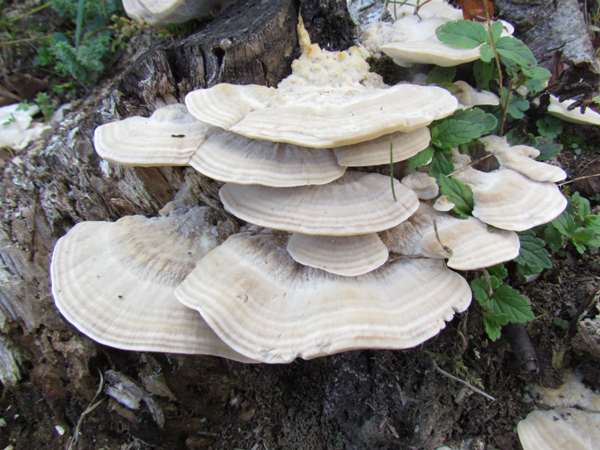
Like Trametes gibbosa, the Lumpy Bracket, Trametes suaveolens, is often tinged green by algae.
This persistent fungus is seen rather
infrequently, mainly on living or dead broad-leaved trees - notably
poplar and willow. The Fragrant Bracket is a tough and inedible fungus.
This picture shows Trametes
suaveolens growing on a long-dead tree trunk. This bracket
fungus often forms tiers of several layers, particularly when growing on
the stumps of dead trees.
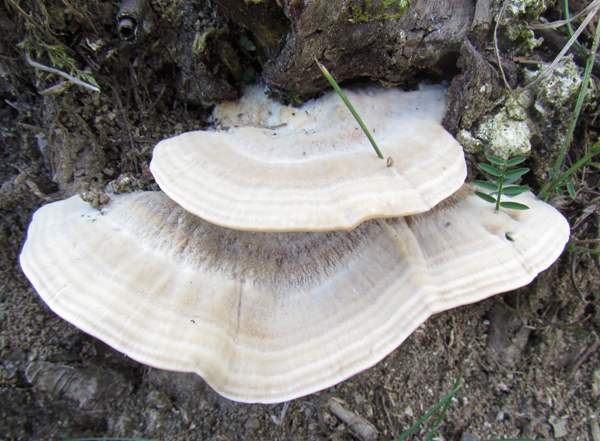
Distribution
A rare find in Britain (a Red Data List species) and Ireland, the Fragrant Bracket occurs also in other temperate regions of mainland Europe. This polypore occurs in parts of Asia, and it is a fairly common find in North America.
Taxonomic history
Originally described by Carl Linnaeus in 1753 and given the name Boletus suaveolens, this bracket fungus was transferred to the genus Trametes in 1838 by the great Swedish mycologist Elias Magnus Fries, thus establishing its currently-accepted scientific name as Trametes suaveolens. (It was Elias Fries who, in 1835, first circumscribed the genus Trametes.)
Synonyms of Trametes suaveolens include Boletus suaveolens L., Daedalea suaveolens (L.) Pers., Polyporus suaveolens (L.) Fr., Trametes bulliardii Fr., Trametes odora Fr., Trametes
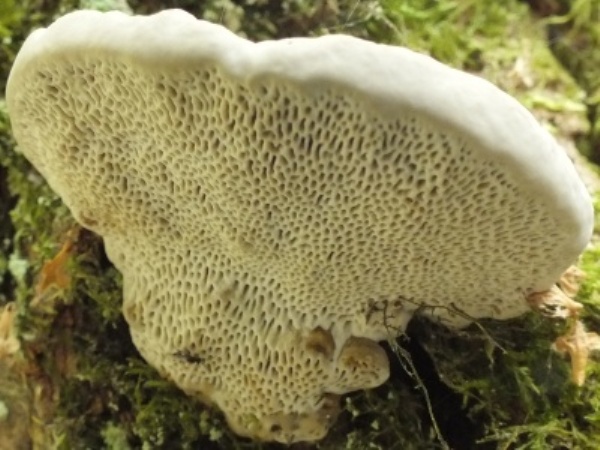
suaveolens f. indora (L.) Pilát, and Haploporus suaveolens (L.) Donk.
Although many other members of the genus Trametes - Trametes versicolor in particular - are more common, Trametes suaveolens is the type species of its genus.
Etymology
Trametes, the genus name, comes from the prefix tram- meaning thin and -etes meaning 'one whi is' - hence the implication is that fruitbodies of fungi in this genus are thin in section, at least on their outer edges.
The specific epithet suaveolens means 'sweet-smelling' - a reference to the strong aniseed (anise) scent given off by fresh young specimens, most noticeably if the pores are rubbed or a bracket is cut or broken. The scent is barely detectable when brackets grow old and dry out.
Identification guide
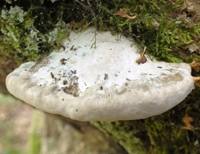 |
Description
This bracket is unusual in that it is
creamy-white or very light grey throughout, although often tinged with
green algae on its finely downy, undulating upper surface.
Brackets are 6 to 12cm across and start off rounded but as they mature they develop a sharper edges at the interface between the fertile (lower) and infertile (upper) surfaces. There is no
stem, and the flesh is very tough. |
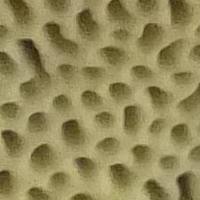 |
Tubes and Pores
The white tubes are 10 to 15mm deep and
terminate in roundish or slightly elongated white, buff or pale grey-yellow pores spaced at 0.5 to 1mm. (The pores appear more elongated when the pore surface is angled rather than horizontal, as in some of the specimens shown here.)
The pore surface turns brownish if it is bruised. |
| |
Spores
Allantoid (sausage-shaped), smooth, 8-12 x 4-4.5; inamyloid.
Spore print
White. |
Odour/taste |
Fresh specimens smell strongly of aniseed but have
little taste. |
Habitat & Ecological role |
On living or dead hardwood trees, notably poplars and willows. |
Season |
All through the year, but shedding spores in
autumn. |
Occurrence |
Rare. |
Similar species |
Tyromyces chioneus is smaller and grows in tiers on rotting
dead wood; its flesh is juicy and its pores are more rounded and much
smaller than those of Trametes suaveolens. |
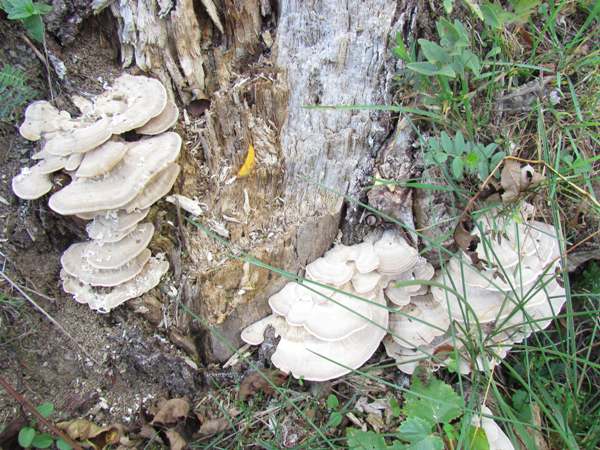
Culinary Notes
Although not generally reported as seriously poisonous, the Fragrant Bracket is too tough to be considered edible. They are also rare in Britain and Ireland and so gathering them would not be appropriate even if they were edible.
Reference Sources
Fascinated by Fungi, 2nd Edition, Pat O'Reilly 2016, reprinted by Coch-y-bonddu Books in 2022.
BMS List of English Names for Fungi
Kout, J.; Vlasák, J. Trametes gibbosa (Basidiomycetes, Polyporales) in the USA and Canada: Canadian Journal of Botany, Volume 85, Number 3, March 2007, pp. 342-346(5).
Mattheck, C., and Weber, K. Manual of Wood Decays in Trees. Arboricultural Association 2003.
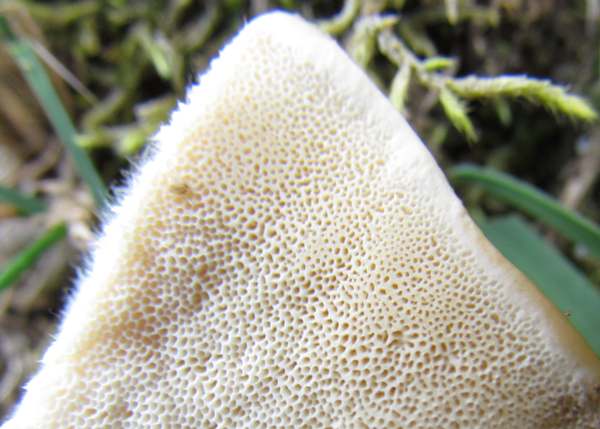
Above: pore surface of one of the Frarant Bracket Trametes suaveolens specimens shown above
Dictionary of the Fungi; Paul M. Kirk, Paul F. Cannon, David W. Minter and J. A. Stalpers; CABI, 2008
Taxonomic history and synonym information on these pages is drawn from many sources but in particular from the British Mycological Society's GB Checklist of Fungi.
Top of page...
Fascinated by Fungi. Back by popular demand, Pat O'Reilly's best-selling 450-page hardback book is available now. The latest second edition was republished with a sparkling new cover design in September 2022 by Coch-y-Bonddu Books. Full details and copies are available from the publisher's online bookshop...